Disney+ Now has Ads, Here’s What Brands Need to Know
PUBLISH DATE: 09 December 2022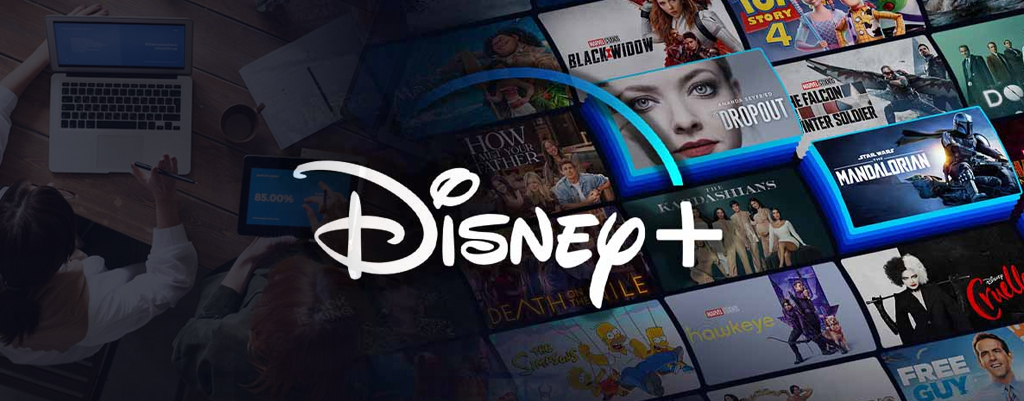
Disney+ has launched its much-awaited ad-supported tier today (December 8) just a month after Netflix launched Basic with Ads, and to no surprise at a cheaper rate – $6.99 a month. Without a doubt, streamers are truly embracing ads.
Disney is one of the last major streamers to roll out its ad-funded plan, but the company is no rookie in this space. Disney’s years of experience selling ads on Hulu gives it the edge in terms of expertise and longstanding client relationships which makes it stand out from the pack in what is an increasingly crowded marketplace of streaming services.
Furthermore, Disney+ is the only US streamer that built its own ad server.
It is believed that Disney is asking $50 CPM and a $2m commitment just below the $65 CPM Netflix is charging.
After announcing its streaming inventory would be up for grabs, Disney walked away from 2022 Upfronts with a record-breaking $9bn in advertisers. It was a much-anticipated property.
As far as the users are concerned, the ad load will be low with an average of four minutes per hour below in comparison to its competitor broadcast channels which would typically carry up to six minutes per hour and in line with Netflix. When compared to NCBU-owned Peacock, which runs five minutes of ads for every hour, that’s fewer ads. Moreover, Disney-owned Hulu runs between 09 to 12 ads in an hour.
It’s also brought to notice that Disney will block ads on children’s profiles and will ban ads related to alcohol or politics.
The company’s sales house, Disney Advertising has been tasked with selling inventory to its streamer. Across its network, the sales house offers over 1,800 audience segments built from 100,000 attributes. On the measurement front, Disney offers tracking brand lift, and attribution based on KPIs, social, valuation, and audience verification. It also runs a self-serve platform and has a programmatic marketplace.
Rita Ferro, Disney’s global president of advertising, told today’s Future of TV Advertising Global conference in London that over 100 advertisers and all the major holding companies have bought ads on Disney+ as the streaming service.
At the conference, she also revealed some key information about the work Disney has undertaken to build an advertising sales team, and how it will use first-party data in addition to advertiser data to offer targeted solutions.
Chief executive officer and co-founder of IRIS.TV, Field Garthwaite, says Disney needs to focus on improving ad relevance and brand suitability to meet advertisers’ expectations.
He further said that incorporating video-level content data into its advertising solution can help Disney to increase the value of its new add-supported options while minimizing the risk of bad viewing experience and brand sentiment by avoiding ad placement in unsuitable environments.
Though Disney+ has launched a cheaper tier in the US with advertising, it has still not been confirmed precisely when this will roll out to other markets.
Could the UK be next on their roadmap?
Why Political Advertisers Need a CTV Strategy Ahead of the 2024 Election Cycle
PUBLISH DATE: 22 November 2022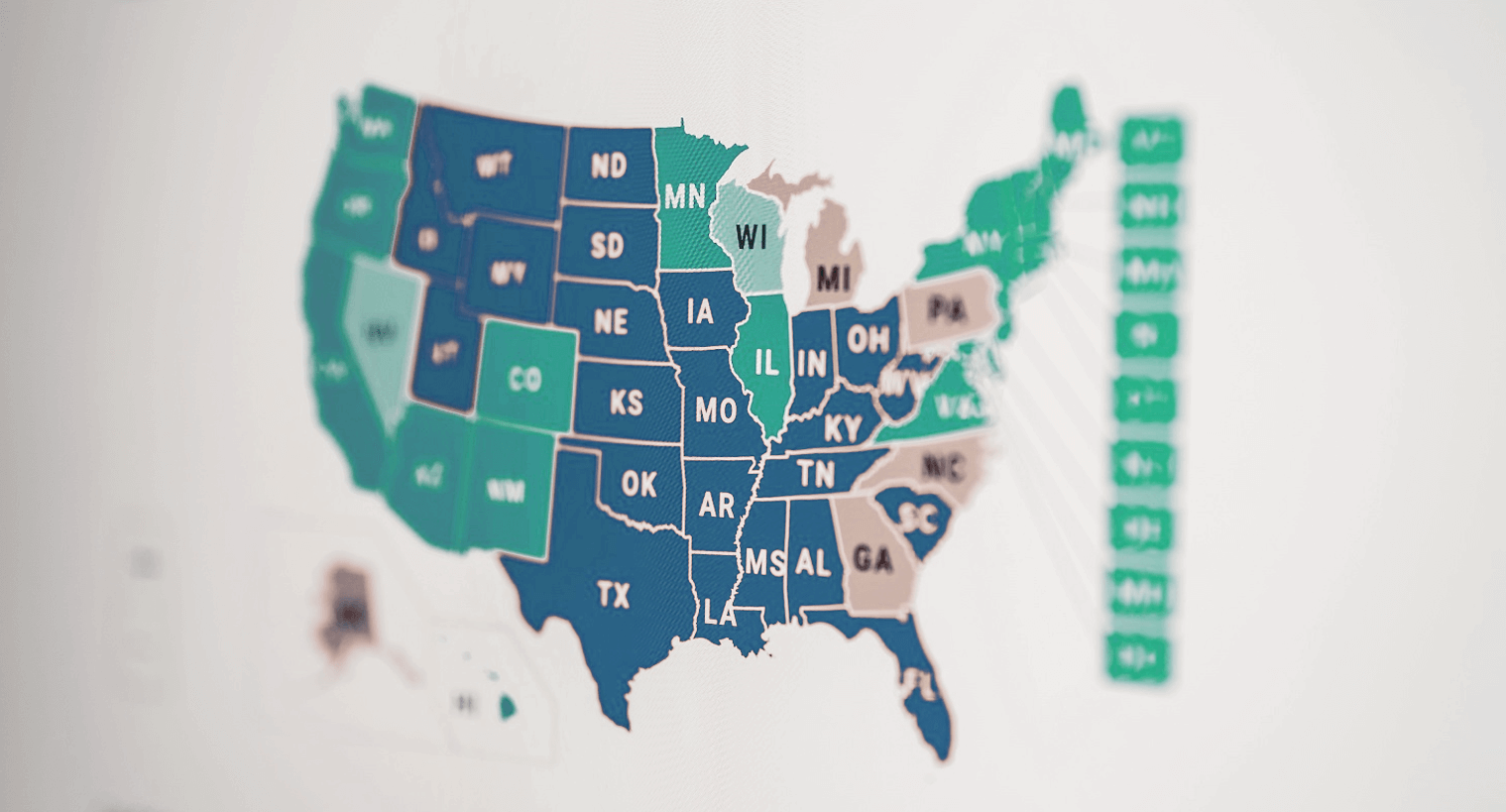
Voters are soon going to line-up to the polls for the 2022 midterm elections, and marketers have this huge opportunity for ramping up their political advertising campaigns. Kantar predicts that Political ad spending for 2022 midterms will reach $7.8 billion. Though, it is no question that broadcast TV will lead the pack, but advertising across digital channels will continue to show significant growth.
This year is the growth in connected TV (CTV) advertising, which is expected to reach $1.2 billion.
Many political marketers began experimenting with CTV ahead of the 2020 elections, but due to pandemic, there has been behavior shift, due to which streaming viewership has grown faster than anyone expected since then.
As of now, there are 85.7 million streaming households in the US, creating a prime opportunity for political marketers to engage voters in every corner of the country.
It’s just a matter of time until the 2024 election campaign will begin to heat up, media strategies for national races are starting to take shape. Political marketers need to build a well-researched strategy and leverage the advantage of CTV and programmatic advertising.
CTV is a crucial part of Political ad campaign
As CTV viewership has increased, it gives political advertisers the advantage of reaching viewers on the streaming platforms where they prefer to consumer their news. The increased reach combined with highly engaging, lean-back CTV viewing experience has been able to draw more attention – and ad spend from marketers.
Optimize engagement in real-time
If marketers want to stay one step ahead of the rapidly shifting narratives of opponents, then media is crucial. CTV and programmatic enable a swift turnaround to deploy new campaign messages into the market, measure impact and optimize engagement in real time.
The superior and precise targeting capabilities of CTV allow political marketers to reach specific segment of voters on the basis of geography, household demographics, and behavior. Though the fragment CTV landscape is a real challenge, however, marketers can reach their targeted audiences in individual market without giving up or sacrificing scale.
In addition to this, leveraging programmatic for political advertising enables marketers to supply across a wider array of media owners and distribution points. They can easily deliver message to the right audience in an effective and scalable way.
Combine complementary datasets with your ad campaigns
The first-party data that is gathered through donations, surveys, or through other meaningful interactions with voters can become a powerful resource when combined with third-party data. By emerging multiple data panels, political marketers can do precise granular targeting on CTV and programmatic. Data specific to geography and device can help advertisers to identify the news inventory that is available within a voting district, whereas, other key attributes like age, gender, social engagement can help advertisers to create a personalized creative to voter’s interests. Such layered data strategy is vital to determine where, when and how to reach voters, and discovering what kind of messages can motivate them.
The advertising capabilities of CTV and its viewership have grown immensely since the last election cycle, providing an unmissable opportunity to reach prospective voters. With key midterm races happening across America, now is the time to test, learn, and prepare for the 2024 presidential election.
Celebrating Diwali at Silverpush
PUBLISH DATE: 14 November 2022
Diwali is one of the biggest festivals celebrated, by biggest we mean, it’s celebrated across India. Some might say that they have holidays that are more popular, but we believe Diwali is one festival that is celebrated across the nation with a big fever.
Silverpush is no less. We believe in going big or going home. And yes, we celebrated it not only in India but across the world where we have expanded, be it Indonesia, New York, Thailand, Dubai, and Singapore, to name a few.
In the past few years, Silverpush has expanded its branches across the world, recently being the United States of America. With vast expansion, it’s natural to come across people of different religion, region who might celebrate different festivals. Silverpush believes in not only celebrating festivals, but celebrating people as well. With this year Diwali celebration, we brought everyone together to participate in the festival.
Almost anyone who grew up in India and celebrated Diwali, will have their own fun Diwali story to tell. We did an event at Silverpush where we hosted many activities like desk decoration, rangoli competition, and even a dance competition. People remembered the good old days and became nostalgic about the fun they had in childhood. The night ended with food and drinks and limitless fun with people dancing around.

Diwali is not just a festival but an emotion for Indians, irrespective of their culture. This festival symbolises the triumph of good over evil. We understand the importance of inclusivity and will encourage people from all around the world to learn about the festival of lights.
Some interesting facts about Diwali. Although Diwali is majorly celebrated by Hindus, but people from other regions also observe the festival with full enthusiasm. Festival of Light is celebrated in different forms by different names. Take a look at some of them.
- In Nepal, people celebrate the festival of Diwali as Tihar or Swanti.
- People of West Bengal observe the festival as Kali Puja.
- In Malaysia people celebrate Diwali as ‘Hari Diwali’ in Aswayuja month.
- People in Thailand observe the Diwali festival as ‘Lam Kriyongh’, they refrain from bursting fire crackers and instead light lamps made of banana leaves.
- In Sri Lanka, on Diwali, people make figures of deities from sugar crystals known as Misiri. They decorate their homes, light candles, and burst crackers.
Diwali is no longer limited to India, and is celebrated worldwide. Let’s celebrate the culture with family, friends, and good food (minus the cookies, we generally don’t work around it).
Happy Diwali everyone!!
JM Financial PE Leads $12M Investment in Silverpush (Silveredge Tech)
PUBLISH DATE: 08 November 2022
Silverpush (Silveredge Technologies Pvt. Ltd), a Gurgaon-based advertising technology company that provides AI tools to analyze and place ads based on content across desktop, mobile, and internet-connected TV platforms, has raised $12 million (Rs.95 crores) in an investment round led by JM Financial Private Equity.
Investors such as Ashish Kacholia of Mirabilis Investment Trust and Seven Hills Capital also participated in the fundraiser.
The investment marks the closing of fourth investment by JM Financial India Growth III.
Proceeds from the investment will be utilized to accelerate growth for global expansion plans of Silverpush and augment its growth through inorganic opportunities.
Hitesh Chawla, founder and chief executive officer, Silverpush on receiving the huge funding said that “This growth capital infusion and partnership with a fund like JM Financial Private Equity, will help us accelerate our current and future business expansion plans. Silverpush has been one of the early believers of privacy-focused advertising. As we continue to innovate our solutions and bring newer products, we shall further enhance the returns for our customers, penetrate deeper into our existing markets and also tap newer geographies.”
Silverpush is currently in more than 20+ countries across Southeast Asia, West Asia, Africa, US, UK and India.
“We are bullish on the shift that we have been witnessing in the digital advertising space driven by increasing consumption of social media and video-based content. Silverpush has demonstrated impressive growth over the last few years and has been able to establish a global presence in over ten countries. With the growing concern over data privacy, cookie-less solutions will grow and account for a larger share of the digital advertising budget,” said Siddharth Kothari, Managing Director – Private Equity, JM Financial.
Silverpush is a pioneer for the first-party based advertising. It provides advertising solutions to brands and media agencies with the help of its properitary AI (Artificial Intelligence) platforms – Mirrors and Parallels and has created a differentiated positioning in the fast-growing segments of online video and cookie-less advertising.
The company believes focused ad placement enables brands to achieve higher returns on ad spends, enhance user experience, minimize ad wastage and create a positive brand recall.
Government regulations and new privacy rules instituted by Apple Inc. and Alphabet Inc.’s Google will limit the advertisers, publishers and tech companies ability to track users and target ads based on their past search behavior. Thus, going forward, marketers have to create a different strategy to revamp their data, while adtech vendors and other companies need to hurry to find alternative ways to reach consumers.
However, one such alternative is contextual advertising, that is to target ads by placing them on the relevant content only. Silverpush uses advanced AI technology to identify key contexts and analyze video, text and audio to help match ads to the relevant content.
What Does Life After Third-Party Cookies Look Like?
PUBLISH DATE: 12 October 2022
Despite knowing the fact about the eventual deprecation of third-party cookies for over two years, some marketers do not have a strategy in place. Indeed, Google pushed back its ban from 2023 to 2024, however, it’s unlikely that it will be delayed again.
When Internet Explorer 2 was released in October 1995, it was the first ever browser to support cookie technology. In the intervening 26 years, third-party cookies dominated the billion-dollar advertising and marketing industry. Cookie-based advertising technology enabled marketers with personally-targeted ads that could track consumers across multiple websites and online destinations in the form of retargeting.
However, consumer privacy concerns have led to safety legislation in countries across the globe, resulting in this tool being specifically targeted by privacy legislators, and phasing out third-party cookies. Apple’s Safari and Mozilla’s Firefox, have already blocked third-party cookies and Google has committed to banning them by 2024.
Marketers who relied on third-party cookies are in a tricky position and will remain to be if they don’t put a strategy in place.
So, the question is what should be the plan to adapt advertising in the coming months that doesn’t include third-party cookies?
Anticipation of financial impact: Third-party cookies are integral to many advertisers and marketers. Some of the large advertisers are anticipated to be hit the hardest, with third-party cookies peaking at 56% in comparison to smaller companies. This is especially true for retail, beauty and financial services as 52% of retailers said they were completely reliant on third-party cookies. 46% of beauty companies; and 43% of companies in financial services also made the same statement.
Increased reliance on social networks: There is no question that advertisers who have built the biggest warehouses of first-party data are seeking to reap the biggest benefit from third-party cookie deprecation. According to a recent survey by Adweek and Lytics, 62% of marketing decision-makers reported that they would increase spending on the largest platforms, namely: Amazon, Facebook, Instagram, and Google. With more and more people spending time online on social media and the Internet, in general, has made it easy for marketers to find their audience and can use granular, targeted advertising technologies to reach their target audience at the right moment when they are most likely to engage.
Focus on owned website data: With the demise of third-party cookies, first-party data will become more valuable, as confirmed by 90% of marketers and advertisers. Unlike third-party cookies, first-party records a user’s preferences and behavior on a market or brand’s website. However, leveraging first-party data comes with its complexities and challenges.
It’s been two years now since Google announced the end of third-party cookies, it’s remarkable to note that many still do not have a strategy to deal with when the third-party cookies are blocked. Silverpush’s advanced AI technology solutions allow brand and advertisers to not only reach their target audience in the right context at the right moment but also respect users’ privacy. Thus, it offers granular contextual targeting without using third-party cookies.
Questions? Reach us out here.
Apple’s New Ad Placements Immediately Caused Brand Safety Crisis
PUBLISH DATE: 02 November 2022
Apple recently unveiled new ad placements in the App Store as a part of its goal to expand revenues. However, the new ad space created controversy immediately after it came into effect. Gambling ads rapidly took over slots, in some cases appearing under apps designed to help overcome gambling addiction. The influx of gambling ads led to an outcry from developers, who didn’t want to be associated with such services and asked Apple to indefinitely pause ads in the gambling category.
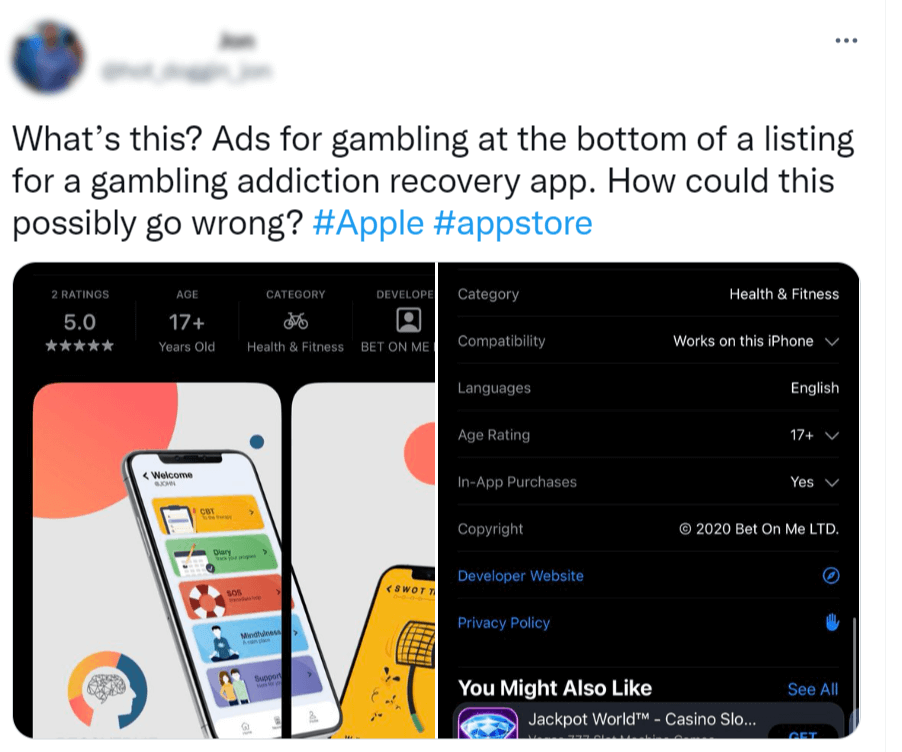
How did this happen? Since the implementation of AppTrackingTransparency, Apple has been keen to expand its ad revenues. So far, these efforts have been much more focused on the App Store.
- Apple is expected to gain around $4 billion in ad revenues in 2022, but as per reports by Bloomberg, it’s looking to expand those revenues into “the double digits”. In order to do that, it launched a bevy of new ad placements.
- One of the primary target is the App Store, as its search ads are a major driver of revenue. Apple has been spending the year opening more ad slots on the store’s home page, search tab, and even at the bottom of an app’s download page under a ‘You may also like’ category. This means that you might see an ad for Facebook on the Twitter’s page.
- Apple is also going to bring ads to Apple Maps, Books, and Podcasts, and exploring launching ads on Apple TV+.
So, where did it go wrong? Beginning from its tech products to its interfaces, Apple has a history to taking pride on user experience above all its new inventions. But if it wants a slice of the ad pie, it’s going to come at a price of its brand reputation.
- Consumers don’t like ads – period. Which is why there’s concern about Netflix launching ads, about Google serving pages full of promoted results, and about ads coming to free-to-play video games.
- There are not only consumers, Apple also has developers and brands to contend with. For one of Apple’s first ad ventures to immediately end up this way doesn’t speak highly of brand safety on its platform.
- It will be really hard for Developers who are already angry about shovelling over an aggressive 30% of in-app purchase to Apple. This makes them even more resentful as they can’t control what’s promoted on their download pages.
- Clearly, there is no excuse for this. Even if wasn’t Apple’s first foray into ads, it should have been ready for such a situation. Plenty of platforms already have come across such an issue where there ads are running where they don’t belong, and increasing ad load always boosts the risk of such incidents.
Conclusion
The gambling example speaks to Apple’s lac of experience in not only managing ad but in also providing a brand safe environment. As Apple tries to claim more ad revenues, both the user and advertiser experiences will decline – the same which can be said for any platform that is trying to dramatically increase its ad load.
What Marketers can Learn from NFLs Mistake During Hispanic Heritage Month?
PUBLISH DATE: 07 October 2022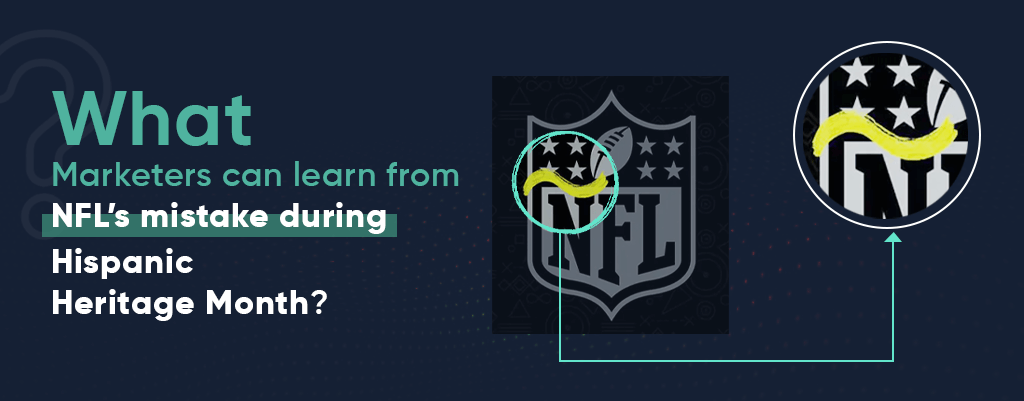
Many companies are looking forward to marking Hispanic Heritage Month, however, recent high-profile mistakes have set an example on what not to do, just in hopes to appeal to a Latino audience.
Let’s be honest, some marketing efforts are outright cringeworthy, utilizing tacos, sombreros, and the Mexican flag in hopes of making an impact on members of the Hispanic community, according to Trinidad Aguirre, a Hispanic marketing consultant.
Aguirre further added that some companies do put forth genuine efforts to honor Hispanic Heritage Month, which takes place from September 15 to October 15, annually, whereas, there are others that just see it as a chance to bring in extra business.
According to the most recent U.S. census data, Hispanic or Latino people constitute to 19% of U.S. population (62.1 million). And with an estimated $1.9 trillion in buying power, it’s important for companies and organizations to be on point with their messaging.
The National Football League (NFL) made a strong start but fumbled down along the way. NFL decided to celebrate and honor this month by sending a tweet an image for their “Por La Cultura” campaign. As soon as the tweet went live, both NFL fans and critics were quick to comment, creating a social media debate, blasting the design which was intended to celebrate Hispanic and Latino players.
Por La Cultura. pic.twitter.com/pFoGGASAWt
— NFL (@NFL) September 15, 2022
So, how can a campaign intended to uplift landed in such a negative impact? Where did the brand go wrong with the campaign? And more importantly, what lessons can marketers take away so that they don’t make this same mistake?
The National Football League’s homage to Hispanic Heritage Month was a huge success, until the organization decided to toss a tide over the N word in their logo which create a social media storm. Many Twitter users described the league’s attempt lazy approach to reach the Hispanic community.
According to the Diversity Style Guide, Ñ is an additional, unique letter in the Spanish alphabetical world – it’s just not an N with an accent mark called a tilde.
This misuse of a character is vital to the Spanish language and is another example of “diversity washing.” This mistake likely sent a message that the community did not have a seat at the table or any input for this campaign.
Though the Por La Cultura campaign was otherwise well done as NFL did a good job of incorporating multiple Hispanic communities, and not just people of Mexican heritage in a 30-second ad, which clearly shows a diverse group of Hispanic people, has a sense of family, Aguirre said.
Nonetheless, here are the key takeways from the NFL campaign which marketers should take a note of.
Don’t Divert and Focus on the Key Message
The organization is still getting criticized for its lack of diversity, equity and inclusion efforts, including allegations of racial discrimination. The campaign came wanted to hit the hearts of the Hispanic community but missed a meaning moment to show commitment to their DEI journey.
In their press release, NFL stated the intended key message of their “Por La Cultura” campaign was to highlight Latino players, coaches and staff. Celebrate their excellence and tell their authentic stories. However, many feel that instead of the image, NFL should have started with the stories and the voices of the players, coaches and staff.
Voice the concerns of the community. Remind yourself of the impact you are hoping to make.
Sometimes, it’s Best to Sit it Out
Lastly, sometimes, it’s just best to sit it out. Wait until you are ready. Don’t give in to the pressure of participating, showing up, honoring, or celebrating a heritage month or any important cultural moment if you aren’t ready to do so.
Netflix, Disney Poised to Shake Up TV Ad World
PUBLISH DATE: 27 September 2022
With the emergence of cheap, ad-supported subscriptions, Netflix and Disney+ are very much expected to take a bite into the revenue of traditional television channels as the streaming services look toward continued expansion.
Netflix this year, accelerated work on advertising and offering as inflation prompts consumers to spend less and competition in the streaming television market escalates.
According to some US media reports, Netflix is expected to launch ad-supported subscription services in early November. This news came a month before rival Disney+ does the same.
“These launches are extremely critical and will create the biggest premium advertising space in more than a generation”, said analytics company Samba TV senior vice president Dallas Lawrence. He further added that it’s going to be a major moment for advertisers.
The bonanza for Netflix and Disney+ could be considerable. Statista, a German company specializing in market and consumer data forecasted that spending on television ads will hot $159 billion globally this year.
Research has also estimated that advertising revenues from streaming could reach $30 billion in two years in the Unites Stated alone.
In the year 2021, global video sharing and online television platform YouTube saw $28.8 billion in ad revenue.
Kevin Krim, head of marketing analytics talking about this said, “Not long ago, everyone said subscriptions would kill ads.”
Image the scenario of a Disney+ subscription, there is no doubt here that a subscription of Disney+ with advertising would tempt marketers with the potential for ads to be served with smashing hot content such as its “Star Wars” franchise.
Besides Netflix, and Disney+ there are some other streaming television services such as NBCUniversal’s Peacock, Paramount+ and HBO Max who already feature ad-supported offerings.
But Netflix and Disney+—with 220 million and 152 million subscribers respectively – steeping a leg in the advertising ring could catch the attention of businesses interested in reaching television audiences like never before.
As per an internal document cited by Wall Street Journal, Netflix is looking forward to win over no less than 40 million subscribers to its ad-subsidized tier by next year’s third quarter.
And when the time comes, Disney+ will make a transition of its existing $7.99-per-month subscription tier to the ad-supported version, and the ad-free option will go for $10.99. The company has confirmed the same for this transition.
A Big Threat is Coming to Old-Time TV
Being able to reach Netflix or Disney+ viewers is a promising platform for brands to reconnect with audiences that have abandoned traditional “linear” television in favor of streaming entertainment which is at its highest peak now.
Being able to reach Netflix or Disney+ viewers promises to help brands reconnect with audiences that have abandoned traditional “linear” television in favor of streaming entertainment, said
“This gives advertisers access to consumers whom they haven’t been able to reach in a while, at the moment when they are most focused and will engage,” said nScreenMedia chief analyst and founder Colin Dixon.
It doesn’t matter when viewers with ad-based subscriptions choose to watch a show or film, the commercials will there, waiting eagerly for them.
Netflix has a huge potential to woo advertisers with its variety of hit original shows such as ‘Stranger Things’ in an ad-subsidized subscriptions tier.
It will also offer advertisers the luxury of placing ads directly with Netflix or Disney+ for viewers all around the world, rather than go through the trouble of negotiating deals with channels or stations in various regions.
But these new subscription tiers will put immense pressure on linear television service providers who have not yet taken the streaming game seriously and have been keeping it to implement later on.
In addition to reaching viewers wherever and whenever they stream television shows, ads on Netflix or Disney+ provide marketers with more data than is available. Television ads on streaming platform can also be targeted at individual viewers.
Netflix and Disney+ have a chance to create new advertising models and to break long-held norms about length of the advertisement or its placement.
So far, streaming television do not seem a threat to digit ad revenues for companies like Amazon, Facebook, Google or TikTok, with marketers looking forward to expand their overall budget for reaching their consumers online.
Meta Exploring Potential for Paid Facebook, Instagram Features
PUBLISH DATE: 09 September 2022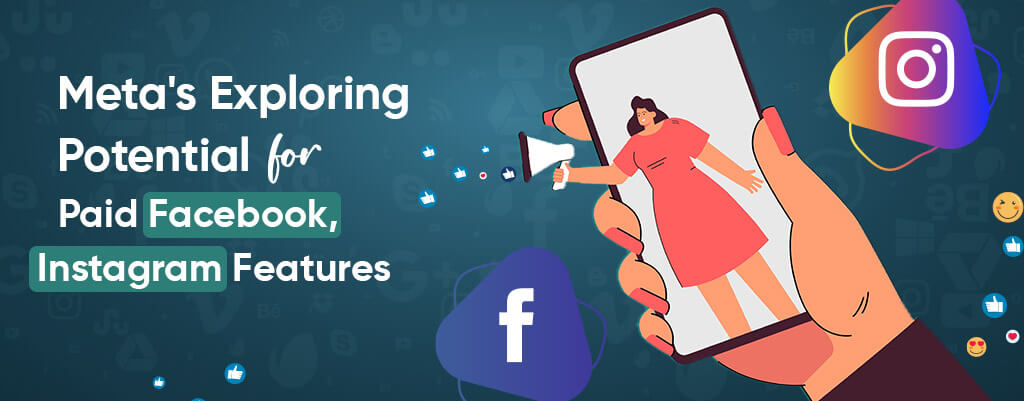
Twitter has already made presence, and Snapchat is slowly gaining momentum with its paid add-on feature. Thus, it makes sense for other social media platforms to explore this space. Meta reportedly now is creating a group to identify and build “possible paid features” for its apps – Facebook, WhatsApp and Instagram.
According to a report Thursday (Sept. 1) by The Verge, it cited that an internal memo was sent last week to the employees at Meta.
As per The Verge:
“This will be first serious foray for Meta into building paid features across its main social apps, Facebook, Instagram, and Whatsapp, all three of which boast billions of users. The decision has been after analyzing Meta ads business performance which was hurt severely by Apple’s ad tracking changes on iOS. Another reason to take a look at paid add-in purchases was due to a broader pullback in digital ad spending. The group, dubbed ‘New Monetization Experiences’ is going to be led by Pratiti Raychoudhury, who was previously Meta’s head of research”
Meta’s VP of monetization, John Hegeman, in conversation with The Verge said that the company is still on its vision to expand the ad business, and have no plans to let people pay to shut off ads in its apps.
He further said that “There are various opportunities to build new types of products, features, and experiences that would people pay for and be excited to pay for”, but he declined to further elaborate on paid features which are being considered.
Meta confirmed that Apple’s tracking changes could cost it as much as $10 billion this year. It’s part of a reason why the company is reportedly looking into new ads that don’t specifically use advanced targeting, and this would require less user data.
These ads are known as Basic Ads which do not use anonymized personal information and are aimed at advertisers who are trying to promote their brand to a broader audience. These ads reportedly measure metrics like engagement and video views which could mean – effective ad results in less cost for exposure, with higher user interaction.
Google Topics Demands Supplemental Signals to Succeed in the Longer Run
PUBLISH DATE: 29 August 2022
As we move forward in the next phase of digital advertising, privacy has become something that cannot be compromised. So, with the user’s privacy in mind, Google has launched Topics API, a new solution to help the advertising industry in dealing with the loss of third-party cookies.
However, since the time of its launch, it has been welcomed with mixed reviews.
Google has long been known for its influence in the digital advertising industry. However, this is not always true.
Even if something is considered private, it cannot always be considered accurate. Google has even admitted on GitHub that “the mapping of sites to topics will not always be precise” and that “training data is imperfect” because it is generated by humans.
Google Topics has an overwhelming number of limitations on which some lights need to be shed. What exactly are they? Read the pointers given below.
- The solution is now being tested publicly, but “good enough” and “not always accurate” may prevent it from gaining the industry support needed to seal the deal and finalize the ban on third-party cookies.
- “Topics”: will only identify topics of interest based on user Chrome activity. Defining consumers’ interests in only five broad categories will provide superficial data and will not provide an accurate picture of what users are interested in both at work and in their personal lives.
- Topics are chosen based on sites visited by users, with each publisher site only representing up to three categories. This makes it difficult for a large news organization like USA Today, which covers a wide range of topics such as politics, business, sports, technology, and more, to accurately represent such publishers’ inventory and reader interests.
- Topics does not take into account consumer interests outside of Chrome, so there is no consideration for what the user does on connected TV or Safari.
- Marketers will have a very incomplete view of consumers’ interests if they do not understand the topics they read on their iPhones, making it difficult to reach them with relevant advertising. Also, this will also be a hindrance for advertising campaigns to drive sales, and performance campaigns to drive conversions.
The Need for Supplemental Signals
The Topics API in its current proposed state limits advertisers’ ability to precisely reach their target audience and lacks real-time optimization.
While Google Topics is a step forward in terms of consumer data privacy, this broad swath of interest-based targeting is a step back for advertisers who rely on precision in targeting to drive performance.
Advertisers should keep in mind that the Topics API is not a stand-alone tool or a substitute for cookies. Agencies should begin experimenting with various alternative solutions to pair with Topics from a variety of vendors to see what kind of performance they can achieve.
Now is the time to put first-party data or a contextual signal strategy to the test to supplement Topics API.
Topics could complement consumers’ digital profiles as marketers focus on building their first-party data infrastructure or contextual intelligence based on audience campaigns.
Summing up, as advertisers focus on building their first-party data infrastructure or contextual intelligence based on audience campaigns, Topics could prove to be a good supplement to the consumers’ digital profiles.














